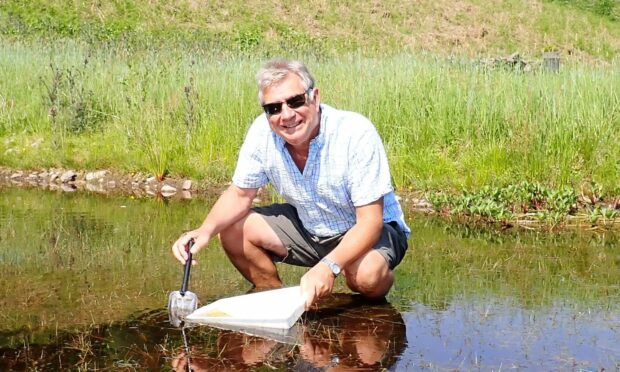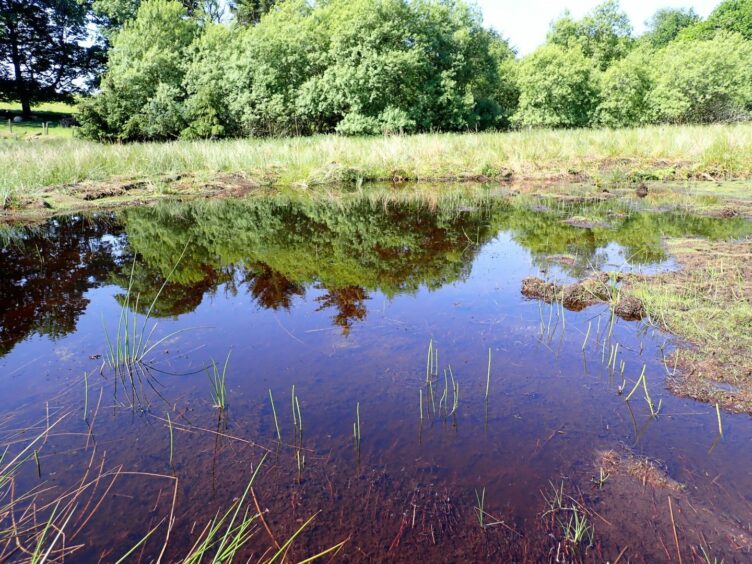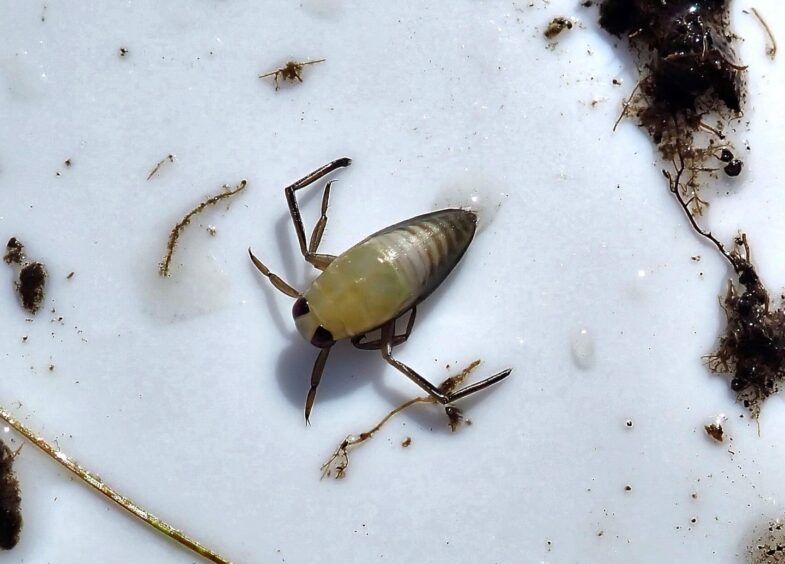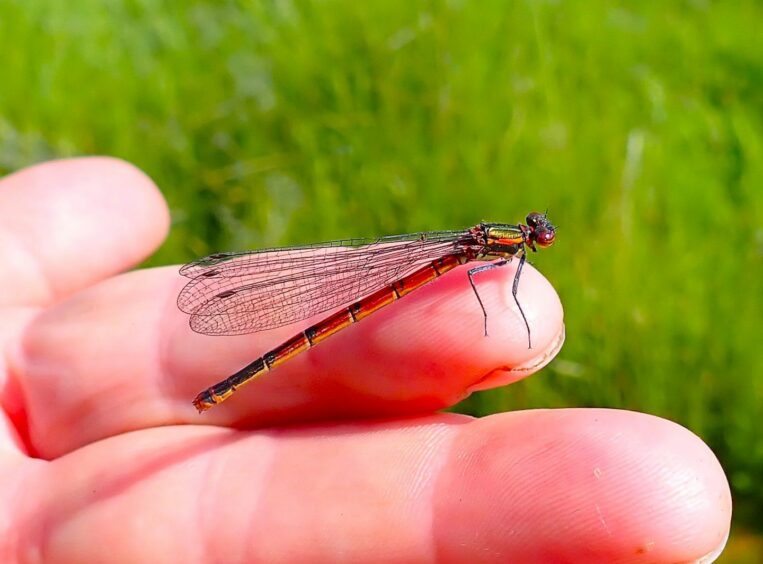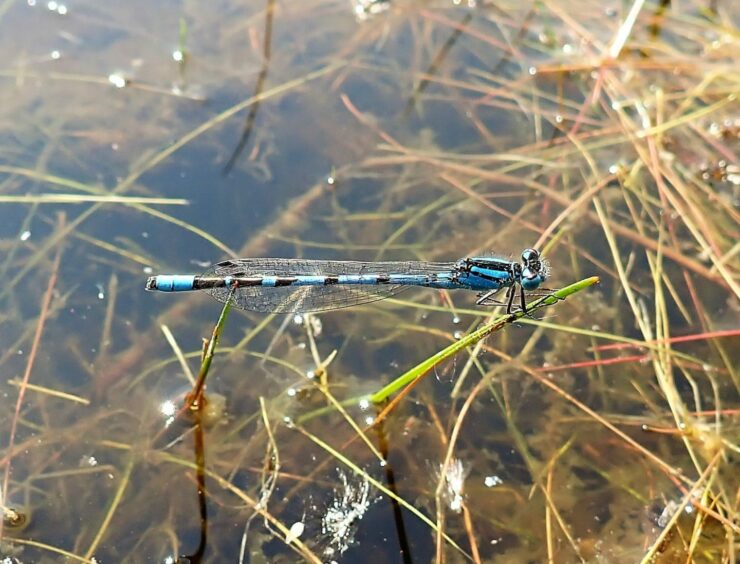Like azure dancers swirling in the hill breeze, the common blue damselflies flitted above this tranquil pond in Glendevon in southern Perthshire, hovering and chasing one another in a love-frenzy of mating to ensure the creation of the next generation.
It was wonderfully hypnotic to watch the male and female damselflies couple in the air before descending quickly down to the water in tandem, where she would dip the end of her abdomen into the water to lay her precious, fertilised eggs.
With the warm soft, shallow bottom of the pond oozing between my toes, my mind buzzed with excitement at the sheer abundance of magical life that called this little watery expanse home. As I waded carefully through the shallows with a small hand-net and collection tray, new discoveries unveiled at every turn.
My first sweep of the net revealed a sparkling treasure trove of insects including backswimmers, stonefly nymphs (larvae) and several wriggling frog tadpoles. The backswimmers – also known as water boatmen – were especially interesting, with their dumpy bodies and long, oar-like legs that are used as paddles to swim. Behind their simplistic beauty lies a voracious predator that swims upside down through the water where it snatches small insects, which are disabled with toxic saliva.
This pond was a superb example of nature conservation at work. In the past it was a curling pond but years of neglect had left it dried-up. Then, two years ago, with the permission of Woodland Trust Scotland, owner of the site, it was restored back to life as a wildlife pond, thanks to the efforts of a small group of Glendevon residents, funded by the Glendevon Community Trust who in turn are funded by the EDF Renewables Burnfoot Wind Farm Fund.
Now, the community has a tranquil place for the enjoyment of nature, as well benefiting from the enhanced biodiversity brought to the area. They also have a place to go curling, should a cold winter ever descend.
Along with the common blue damselflies, large red damselflies were present in good numbers and the banksides were regularly patrolled by four-spotted chaser dragonflies. Damselflies and dragonflies spend most of their lives underwater as larvae. They live in this stage between four months and five years depending on species, and only live as flying adults for two or three weeks.
When ready to emerge, the larva will climb out of the water and the adult dragonfly or damselfly will emerge from its larval skin.
Another scoop with the net revealed a strange, circular gelatinous mass peppered with reddish specks. I wasn’t certain, but this was most likely the egg mass of some kind of water snail. This pond was as exciting as any coastal rockpool – and just as diverse in the richness of life.
As I put my walking boots back on and readied to leave, a pair of sand martins swooped low over the pond, dipping low and swerving, and taking advantage of the rich insect pickings from this bountiful oasis nestled in a beautiful glen.
